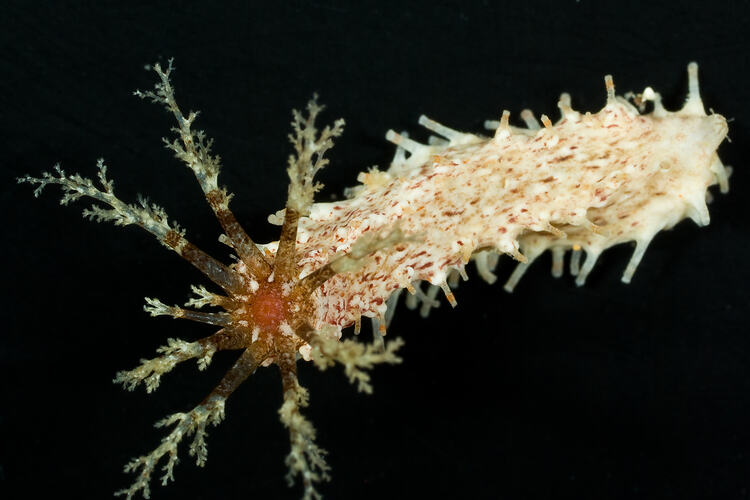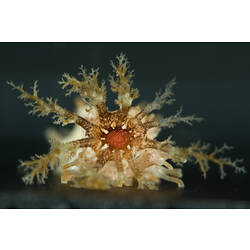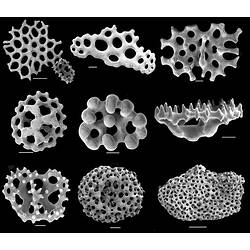General Description
Rectangular shaped body with tapered tail and anal teeth; distinctly flattened ventral surface; multi-coloured body but always with orange markings; 10 dendritic tentacles, ventral two smaller; radial tube feet less dense in the two dorsal radii compared to the 3 ventral radii; body wall calcareous and hard due to dense scales; body wall ossicles scales, knobbed perforated plates and cups; up to ~30 mm long by ~7 mm wide.
Biology
Plesiocolochirus ignavus is a suspension feeder, it uses dendritic (branching/tree-like) tentacles to gather organic particles from the nearby water. It is one of the more common southern Australian shallow-water sea cucumbers, frequently found along coastal rocky reefs. Adults of this species are usually found attached to the under surface of rock, while juveniles prefer to make their home on algae. Plesiocolochirus ignavus was first described in the late 1800s from specimens collected in the Gulf of St Vincent in South Australia, and it has since been found in all southern states and extending as far north as northern New South Wales.
Distribution
Southern Australia: including Western Australia, South Australia, Victoria, Tasmania and NSW
Habitat
Temperate reefs. On seaweed, in algal holdfasts, and on the under surface of rocks, to depth of at least 65 m.
More Information
-
Animal Type
-
Animal SubType
-
Fast Fact
Often found in kelp holdfasts.
-
Brief Id
Hard, rectangular body, flattened ventrally, white with orange flecks, 10 feeding tentacles, tube feet present.
-
Maximum Size
3 cm
-
Habitats
-
Diet
Organic matter
-
Endemicity
-
Depths
Shore (0-1 m), Shallow (1-30 m), Deep ( > 30 m)
-
Water Column Locations
On or near seafloor
-
Taxon Name
-
Scientific Author
(Ludwig, 1875)
-
Common Name
Sea Cucumber
-
Phylum
-
Class
-
Order
-
Family
-
Genus
-
Species Name
ignavus




